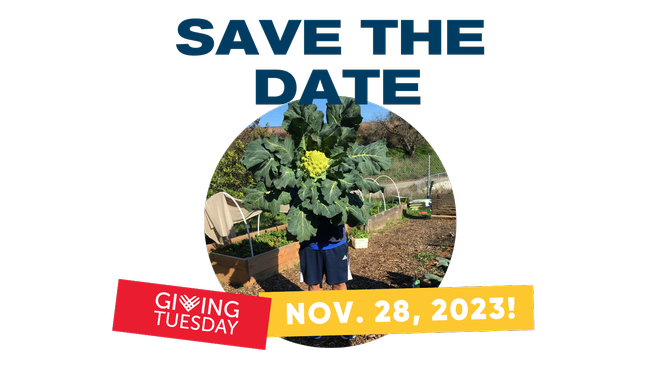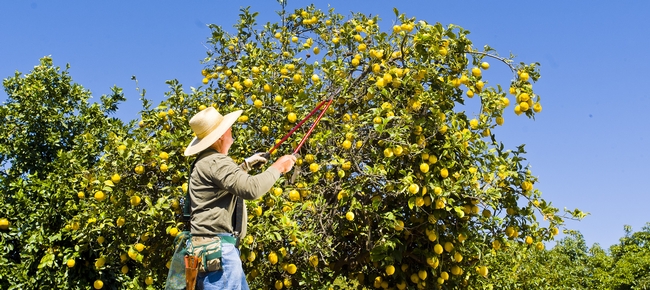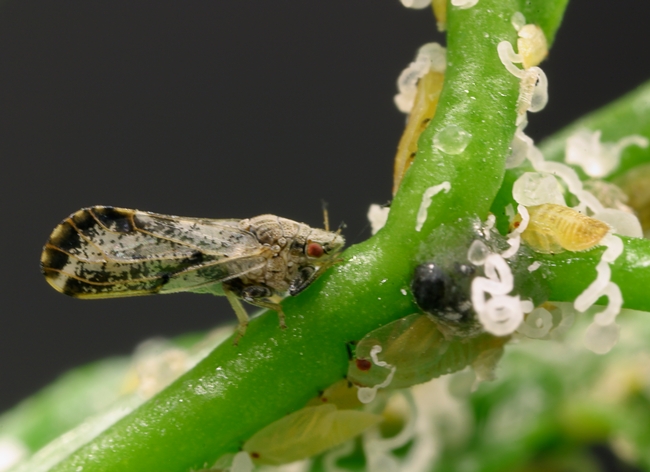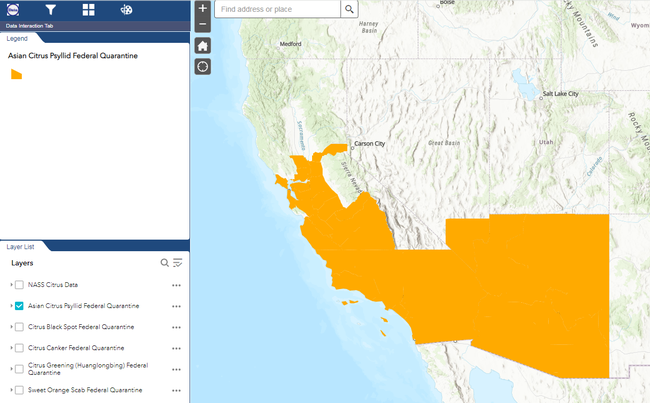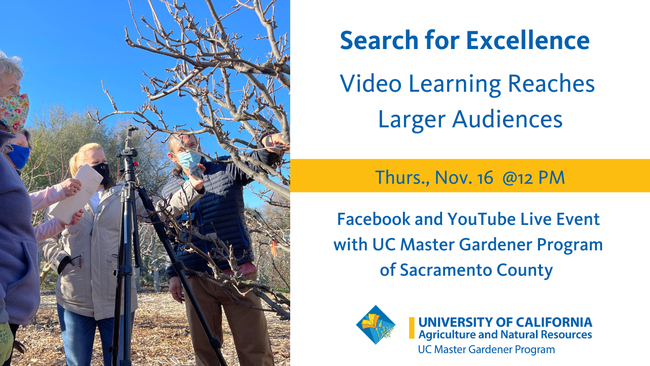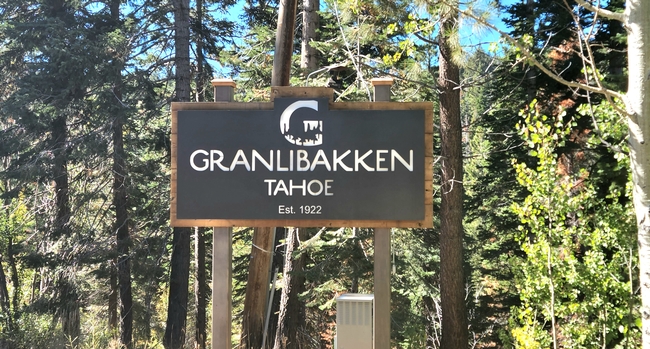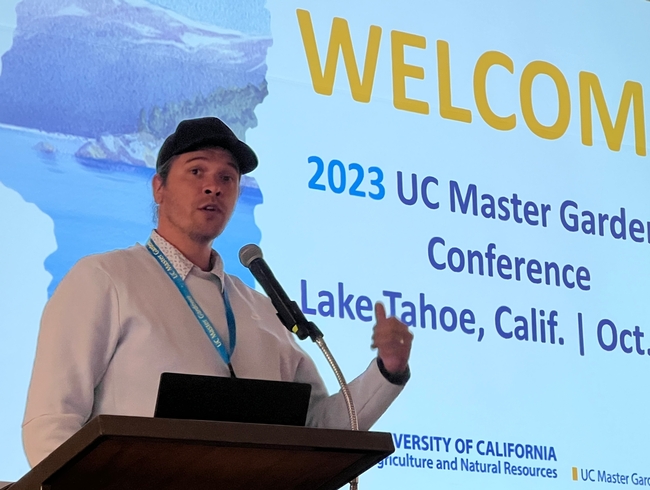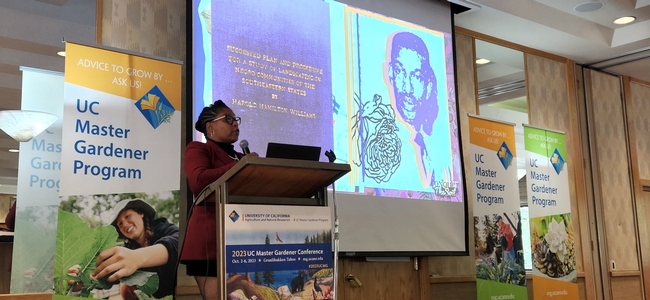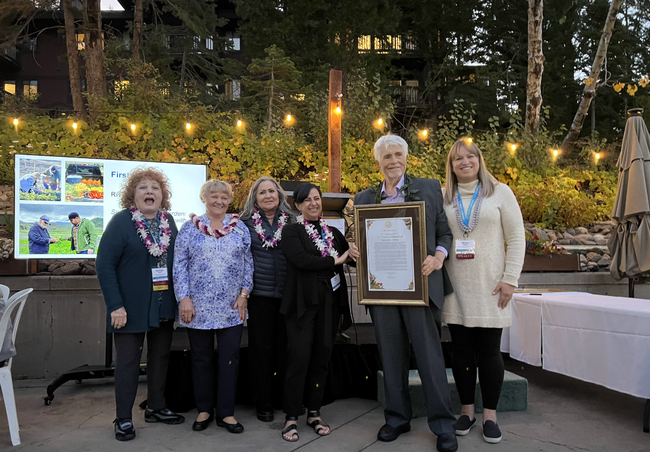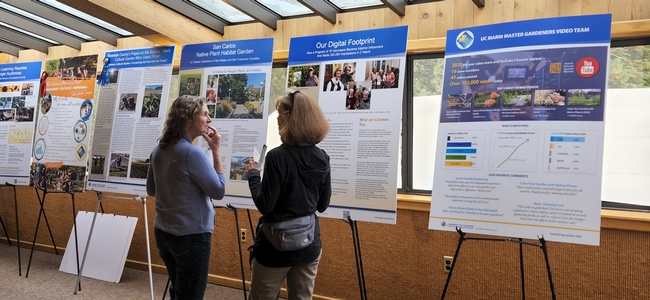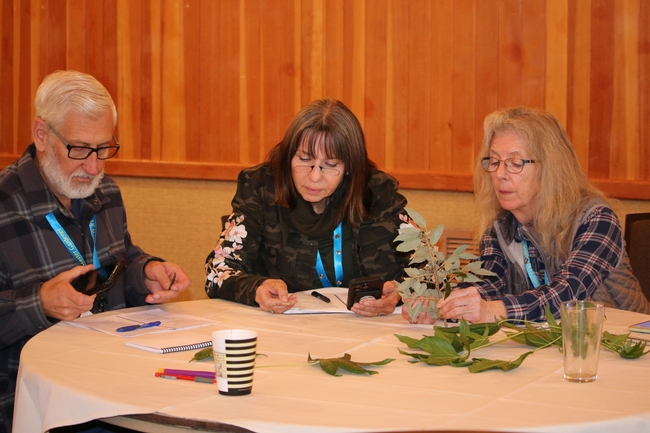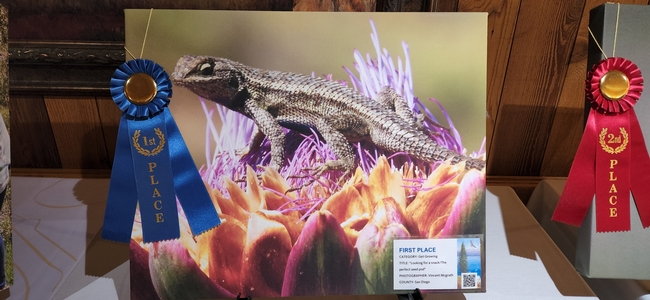In the News
Join us and give back this Giving Tuesday, Nov. 28!
The day that inspires acts of generosity is here again on Nov. 28 it's Giving Tuesday, and we hope you support the UC Master Gardener Program in its 8th year of participating!
Giving Tuesday is a global movement that takes place every year on the Tuesday after Thanksgiving. November is the month of gratitude and a time we reflect on all we are grateful for in our lives. Gratefulness for what we have often leads to a desire to give back to organizations that improve lives.
The UC Master Gardener Program helps create gardening resources, virtual workshops and empowers gardeners to support food banks, schools, and community gardens. Many studies illustrate the benefits of gardening on health and how important it is to get outside and be around green spaces. Through gardening education, the UC Master Gardener Program allows participants to spend more time outdoors, which improves mental and physical health. Your support helps us to continue evolving this education and give back to our community through workshops for all ages, resources for every gardener, and produce donations for those in need.
How can you help? Here are a few simple ideas:
- Join us and donate. Your gift can be applied directly to support your local county program.
- Follow us on Facebook and Twitter for exciting updates. Tag @UCMasterGarden and include the hashtags #GivingTuesday and #GiveBack.
- Please share this message with friends and family and encourage them to join the movement!
We're asking you to join us in supporting the UC Master Gardener Program by helping spread the word to friends and family who want to support you in making an impact. Thank you for all you do for the UC Master Gardener Program and for joining the #GivingTuesday movement! For more information visit: ucanr.edu/givingtuesday
Citrus Care in the Sharing Season - Help Prevent the Spread of Asian Citrus Psyllid (ACP)
As gardeners, we're often generous with our garden's bounty. From sharing seeds and plant trimmings to the joy of gifting homegrown fruit and vegetables, gardening is as much about community as it is about growing plants. However, in this season of sharing, we must also remember our responsibility to prevent the spread of pests and invasive species to protect California's diverse ecosystem.
First detected in California in 2008, Asian citrus psyllid (ACP) has been a concern for both commercial citrus growers and home gardeners. ACP poses a significant threat to California's citrus trees, capable of spreading the deadly huanglongbing (HLB) disease, an incurable condition that eventually kills the tree.
Detecting ACP involves looking for a few key characteristics. ACP is a tiny, mottled brown insect about the size of an aphid. Adults are typically 3 to 4 millimeters long and are identified by their distinctive body shape, where the head is narrower than the body, and they hold their wings tent-like over their bodies. They are most active during warm temperatures, and you might notice them jumping or flying when disturbed. The nymphs, the immature form of the psyllid, are yellowish-orange and secrete white, waxy tubules from the back of their abdomen.
Additionally, ACP leaves telltale signs on citrus leaves, such as twisted or curled new leaf growth. They are sap-feeders, like aphids and mealybugs, so they produce honeydew which leads to the growth of sooty mold. Regularly inspecting your citrus trees, especially the new growth, is key to early detection of ACP.
Recent updates to the USDA's Plant Protection and Quarantine citrus map highlights areas that are generally infested with ACP and those which are not. This distinction is crucial for understanding the regulations and eradication efforts in different regions across the state. To find detailed quarantine information by county or zones, visit the California Department of Food and Agriculture (CDFA) ACP Regulation and Quarantine Boundaries website and maps.
Looking at the map pictured above, areas in the southern region of California, south of the Grapevine or San Gabriel and Tehachapi Mountain Ranges, and as far up the coast as Santa Barbara County are considered generally infested. The CDFA does not carry out eradication efforts for ACP in these areas. In areas north of the Grapevine, an ACP detection on a residential citrus tree would trigger an eradication response from the CDFA.
As we approach the holiday season, a popular time for gardeners to share budwood for grafting, it's crucial to understand the importance of not moving citrus planting material between quarantine areas. It is especially important not to move budwood or citrus from Southern California or the Bay Area into California's Central Valley.
To aid in this effort, UC Master Gardener Program resources are available to help educate you about identifying ACP and understanding the quarantine regulations. Here are some key actions you can take:
- Only purchase new citrus trees from reputable nurseries.
- Do not accept tree cuttings or budwood from friends or family.
- After pruning or removing a citrus tree, dry out the green waste or double bag it to help ensure the green waste is disposed of appropriately.
- Control ants in and near citrus trees with bait stations. Scientists have released natural enemies of ACP in Southern California to help keep the pest in check, but ants aid ACP in evading the natural enemies.
The UC Agriculture and Natural Resources ACP website offers an interactive map tool, biological control efforts, and an online calculator for the potential costs of using insecticides. Additionally, the Statewide UC Integrated Pest Management website provides free online training for gardeners and detailed Pest Notes on ACP and HLB disease. Remember, inspecting your citrus trees is vital to prevent the spread of ACP and HLB. If you suspect an infestation, contact the CDFA Exotic Pest Hotline at 1 (800) 491-1899 or your local county agricultural commissioner.
Let's continue to share the bounties of our gardens, but let's do so responsibly, keeping our citrus trees safe and healthy. Together, we can make a difference in the fight against ACP and HLB.
Facebook Live: Search for Excellence, Video Learning Reaches Larger Audience
Join us on Facebook on Thurs., Nov. 16 for a LIVE event as we learn about Sacramento County's award-winning project, "Video Learning Reaches Larger Audiences." This project was recognized for being innovative and has encouraged other programs across California to make videos that are informational, easy to watch and engaging. Their dedication to helping their community was especially clear during the pandemic, showing their willingness to adapt and keep delivering the UC Master Gardener mission.
No registration or special link needed, the talks will be streamed LIVE to Facebook and YouTube.
Date: Thursday, Nov. 16
Time: Noon
Link: https://fb.me/e/39IoRvOdg
Speakers:
Kathy Steuer, UC Master Gardener Volunteer Sacramento County
Mary Welch, UC Master Gardener Volunteer Sacramento County
Facebook Live is an authentic and interactive way to interact with our audience in real time. It also allows the ability to build value, trust and raise brand awareness of the UC Master Gardener Program. Share the Facebook Live opportunity on your personal and local program pages and tune in to the UC Master Gardener Program Facebook Live broadcast! Let us know in the comments section what topics or questions you would like answered on Thursday or on future Facebook Live topics.
Find recording of LIVE events here: LIVE Series - UC Master Gardener Program (ucanr.edu)
Fall Colors Explained
Welcome to Fall!
It's my favorite season and likely for many of you, as well. Beyond the holidays and extra time with family and friends, nature radiates its beautiful hues. In addition to lovely foliage, deciduous trees often expose exquisitely shaped and sturdy trunks. And, of course, there is the lovely fall foliage showcased by many species.
Did you ever wonder why trees "turn" color in the fall? The short answer: It's primarily a function of long, cool fall nights and short, sunny days. The longer answer? Chlorophyll is responsible for the basic green color of leaves we see in spring and summer and is a necessary component of photosynthesis, which uses sunlight to manufacture sugar (food) that is stored during the dormant period of the year. Carotenoids produce yellow, orange and even brown pigments in crops such as carrots, squash, bananas and many ornamental plants such as daffodils and poppies. Anthocyanins are red and orange in color and are most linked to lavish displays of brilliant fall foliage. They also give rise to coloring of strawberries, plums and cherries.
Here's the kicker: While chlorophyll and carotenoids are present in leaf cell chloroplasts throughout the entire growing season, during fall chlorophyll begins to break down. Voila! The lovely yellow and orange hues we all look forward to seeing are finally exposed. In addition, red hues (called anthocyanins) are produced in fall. So, in reality foliage doesn't "turn" orange or red at all.
Interestingly, the actual timing of color change varies across species and appears to be genetically inherited. The same species will exhibit a similar color scheme in cool temperatures in higher elevations at nearly the same time as it does in warmer lower elevation climates.
The intensity of color can vary quite a bit however. Where do temperatures enter the picture? Both the amount of color and the overall intensity of fall color is very linked to weather conditions that occur prior to and during the actual time the chlorophyll in leaves winds down. The most brilliant displays occur after several warm, sunny days and cool, crisp (above freezing) nights. This is because although lots of sugars are made in leaves during sunny daytime hours, the corresponding cool nights prevent the sugars from moving out. The amount of soil moisture also helps ensure that from year to year fall colors vary even in the same trees. So, either a late spring or a prolonged drought can both delay the display of fall color by a few days or even a few weeks.
What's the recipe for the most brilliant fall display? Most likely a warm, moist spring followed by a warm summer and sunny fall with cool autumn nights. Although fall color is not nearly as spectacular in lower elevations of Southern California compared to other colder areas of the nation, the liquidambar or American sweet gum (Liquidambar styraciflua) offers some pretty impressive fall color and an impressive 300 to 400-year life span. (Did you know that liquidambar got its name because it at one time was a sought-after chewing gum for Native Americans?)
Two “climate-ready” tree species with lovely fall foliage that grow in both the west portion of the county and the desert are the ‘Keith Davey' Pistache, a large street and park tree sporting crimson to scarlet colored foliage and its relative, the ‘Red Push' Pistache, a hybrid between P. atlántica x P. integerrima) which has lovely red foliage as it emerges in Spring as well as Fall. Others include the Raywood Ash (Fraxinus oxycarpa 'Raywood') sporting a reddish-purple hue in the fall, and the ‘Sunburst' Locust (Gleditsia triacanthos var. inermis 'Sunburst') which offers a vivid display of fall color. Unfortunately, it is susceptible to the Invasive Shot-Hole Borer. If you have one of these lovely trees already, take good care of it to help it stand up to this aggressive pest!
Happy Fall! Enjoy the cooler weather, family and friends, and lovely trees!
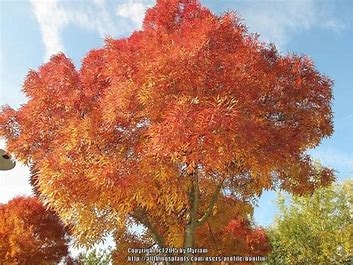
Raywood Ash source national gardening association
Connecting, Learning, and Growing - A Conference to Remember
From Oct. 2-6, the Granlibakken Resort bustled as UC Master Gardener volunteers, program coordinators, academics, and staff gathered at the 2023 UC Master Gardener Conference in Lake Tahoe. A treasure trove of session topics, hands-on workshops, crafts and evening activities along with tours, and dynamic speakers had been thoughtfully curated to fulfill attendees' requests. Meanwhile, the social media photo wall, Search for Excellence posters, and photo contest display transformed the Granlibakken Resort into a space of celebration where attendees mingled and networked with friends and colleagues from across the state.
Welcome & Keynote Speakers
Missy Gable, Statewide Director, extended a warm welcome to all conference participants and encouraged them to embrace the chance to engage with the natural beauty and rich history of the Tahoe-Basin area, all while fostering connections and relationships with fellow attendees. The breathtaking Sierra Nevadas provided a majestic backdrop as JoLynn Miller, UC Cooperative Extension Director in Central Sierra, and Dan Macon, UC Cooperative Extension Director in Nevada and Placer Counties, greeted the gathering and celebrated the impact of UC Master Gardener volunteers.
Herman Fillmore
Herman Fillmore, the esteemed Culture and Language Resources Director of the Washoe Tribe of Nevada and California, played an integral role in welcoming us to Lake Tahoe. With a unique blend of cultural pride and linguistic expertise, Fillmore guided us through an immersive experience of the history of the region. He addressed us in the Wá?šiw language, a linguistic treasure that has been preserved through centuries of tradition, and thoughtfully rendered translations into English, ensuring that all those present could fully understand and appreciate his message. Fillmore's message went beyond words; it was a deep invitation to connect with the natural world around us. He encouraged us not just to appreciate the beauty of the landscape but to fully embrace it. He emphasized the importance of leaving no trace as we are all guests for a short time on this planet, reminding us of our responsibility to protect the earth for future generations.
Abra Lee
In her keynote address, Abra Lee took attendees on a journey back in time as she vividly portrayed the inspiring stories of pioneering women in horticulture. She told the history of Blanche Hurston who ran the first Black-owned florist shop in Jacksonville, Florida in the 1920's. Hurston grew many of her own flowers for her well sought after arrangements and also sourced plants from local woods and swamp lands. Lee also shared the tale of the formidable Mahalia Jackson, who ingeniously sold beautiful blooms and offered to sing at your funeral. The riveting chronicles of these invincible women, who not only carved a path for themselves but also paved the way for many others, continue to inspire generations of plant lovers today. Lee presented an opportunity to learn from the past, grow in the present, and inspire for the future.
Awards Banquet and the Search for Excellence Winners
After a captivating afternoon filled with inspirational guests and keynote speakers, attendees gathered for an awards banquet. Beneath the stars and patio heaters, the highly anticipated moment arrived to recognize and celebrate the exceptional Search for Excellence projects. The recipients of the Search for Excellence awards were individually honored and received special recognition from their respective State Senators for their remarkable achievements and impactful projects.
Learn more about each of the winning projects here:
- First Place, Riverside County, Soboba Cultural Garden: Connecting the Past with the Future
- Second Place, Placer County, Engagement+Education+Enthusiasm = School Garden Success!
- Third Place, El Dorado County, Cross Pollination, Growing Abilities: Cultivating Independence and Community in the Garden
- Third Place, Sacramento County, Video Learning Reaches Larger Audiences
Search for Excellence Posters are Online
Here's some exciting news: The UC Master Gardener Search for Excellence posters are now available online. Participants printed and displayed their posters for the entirety of the conference but now they can viewed by all online. These posters are not just showcases of excellence; they are windows into the world of community-driven gardening initiatives, educational projects, and innovative solutions. To view the individual posters use this link https://ucdavis.box.com/s/2iritqsclrrqudqc6p17gbqpdmgeojwo
Sessions, sessions, and more sessions!
With 25 break-out and intensive sessions and a keynote speaker, there was a wealth of knowledge and experience available to all who attended the triennial conference. Session presentations and handouts were made available online using this link: https://ucdavis.box.com/s/rd7d0onqthtixg576zo6dzhdnxnshuar. Don't forget to enter your continuing education hours into the Volunteer Management System, use the guide on the conference website to help https://na.eventscloud.com/website/58914/continuing-education/
Activities
Creativity was unlocked at the crafting hypertufa pot and magical fairy sticks workshops. Attendees got to take home their own unique imaginative creations. People were all smiles getting as they were led through their activities, a truly fun hands-on experience. Night activities included the highly anticipated bingo night, a movie showing of "The Biggest Little Farm" with snacks and beverages, and of course an evening under the stars on the patio with fire pits.
Photo Contest Winners
The conference also had a photo gallery where attendees could view and vote on their favorite photo contest finalists. The UC Master Gardener Photo Contest's Gardeners Choice award went to Vincent McGrath of San Diego County, for his photo titled, “Looking for a snack.” Congratulations to all of the finalists and thank you to all who voted.
You can view all the photo contest winners here https://ucanr.edu/blogs/blogcore/postdetail.cfm?postnum=57905
Thank you, we hope you join us in 2026!
Many thanks to the numerous volunteers, host counties and conference planning team members who made the 2023 conference a reality. Without their dedication and support the conference would not have been possible. We look forward to continuing the celebration of the program and the magic of its volunteers at the next UC Master Gardener Conference in 2026.
Have a location suggestion for the 2026 conference? Let us know in the comments below!
Do you have a suggestion for the next conference location, topics, activities, possible speakers? Let us know via this survey link https://surveys.ucanr.edu/survey.cfm?surveynumber=22144





